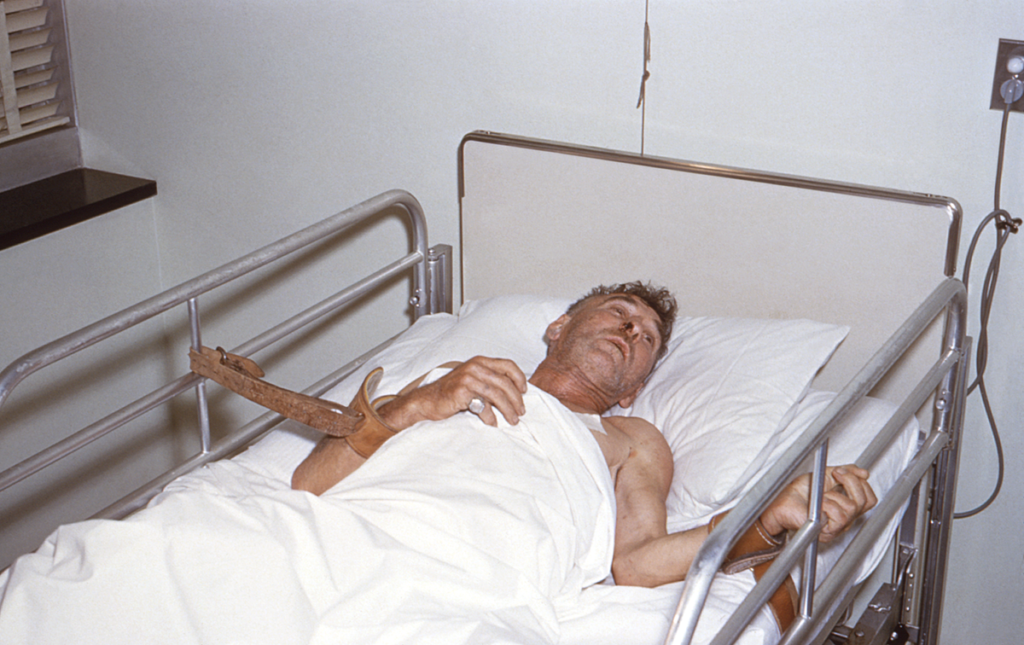
Rabies is a fatal but preventable viral disease. In the United States, rabies is found mostly in wild animals such as bats, raccoons, skunks, and foxes. However, dogs still carry rabies in many other countries, and most rabies deaths in people worldwide are cause by dog bites.
Rabies is a viral disease that causes encephalitis in humans and other mammals.[1] Early symptoms may include fever and tingling at the site of exposure. These symptoms are follow by one or more of the following: nausea, vomiting, violent movements, uncontrolled excitement, fear of water, inability to move body parts, confusion, and loss of consciousness.[1] [6][1][6][ 7][8] After symptoms appear, the outcome is almost always death, regardless of treatment. The interval between infection and the onset of symptoms is usually one to three months but can vary from a week to as little as a year. The time depends on the distance the virus must travel along the peripheral nerves to reach the central nervous system. Rabies is a vaccine-preventable, zoonotic, viral disease. Rabies
This is present on all continents except Antarctica, with over 95% of human deaths occurring in regions of Asia and Africa. This is one of the neglected tropical diseases (NTD) that primarily affects poor and vulnerable populations living in remote rural areas. About 80% of human cases occur in rural areas. Although there are effective human vaccines and immunoglobulins for rabies, they are not readily available or accessible to those in need. Globally, deaths from rabies are rarely report and children aged 5-14 years are most affect. Managing rabies exposure, where the average cost of post-exposure prophylaxis (PEP) is currently estimate at an average of US$108, can be a devastating financial burden on affect families
Each year, more than 29 million people worldwide receive vaccinations after being bitten. This is estimate to prevent millions of deaths annually. Globally, the economic burden of dog-mediate is estimate at US$8.6 billion annually.
Symptoms
The incubation period for rabies is usually 2–3 months but can vary from 1 week to 1 year. Depending on factors such as the site of virus entry and viral load. Early symptoms of include fever with pain and an unusual or unexplained tingling, pricking. Or burning sensation (paraesthesia) at the site of the injury. As the virus spreads to the central nervous system. A progressive and fatal inflammation of the brain and spinal cord occurs.
There are two forms of the disease: Furious results in symptoms of hyperactivity, excitable behavior, hydrophobia (fear of water). And sometimes aerophobia (fear of drafts or fresh air). Death occurs after a few days due to cardiorespiratory failure.
This form of has a less dramatic and usually longer course than the enraged form. Coma gradually develops, and eventually death occurs. The paralytic form of is often misdiagnose, leading to underreporting of the disease.
Later signs and symptoms may include:
- fever
- Headache
- Nausea
- vomit
- movement
- restlessness
- get confuse
- Hyperactivity
- Difficulty swallowing
- Excessive salivation
- Difficulty swallowing water causes fear of attempts to drink fluids.
- The fear was go from the air on my face.
- Hallucinations
- Insomnia
- Partial paralysis
Diagnosis
Current diagnostic tools are not suitable for detecting rabies infection before the onset of clinical disease. And clinical diagnosis can be difficult unless the rabies-specific symptoms of hydrophobia or aerophobia are present. Human rabies can be confirm intravitally and by various postmortem diagnostic techniques. That detect whole virus, viral antigens, or nucleic acids in infected tissues (brain, skin, or saliva).
Transmission
People are usually infect after a deep bite or scratch from an animal with rabies. And 99 percent of cases are transmitt to humans by rabid dogs.
In the United States, bats are now the leading source of human rabies deaths. Because dog-mediated transmission has largely broken down in the region. Human deaths following exposure to foxes, raccoons, skunks, jackals, mongooses. And other wild carnivorous host species are rare, and rabies is not known to be transmitt by rodent bites.
Transmission can also occur if the saliva of infected animals comes into direct contact with human mucus or fresh skin lesions. Contraction of rabies by inhalation of virus-containing aerosols or by transplantation of infect organs has been describe. But is extremely rare. The same applies to transmission to humans through consumption of raw meat or milk from infected animals.
When to See a Doctor
If you have been bitten by an animal, or have been expose to an animal with suspected rabies, seek immediate medical attention. Base on your injuries and the situation in which you were expose , you and your doctor can decide whether you should get treatment to prevent rabies.
Even if you’re not sure you’ve been bitten, get medical attention. For example, a bat that flies into your room while you sleep can bite you without waking you. If you wake up to find a bat in your room, assume you’ve been bitten. Also, if you find a bat near someone who cannot report the bite, such as a young child or disable person, assume the person has been bitten.
Case Management
If possible, veterinary services should be alert, the biting animal identified, removed from the community, and either quarantined for observation (for healthy dogs and cats) or for immediate laboratory examination. (dead animals or animals showing clinical signs of rabies) PEP should be continue during the 10-day observation period or while awaiting laboratory results. Treatment can be discontinue if the animal is find to be rabies-free. If a suspect animal cannot be capture and teste, a full course of PEP should be complete. Joint contact tracing by veterinary and public health services is encourage to identify the additional suspect rabid animal. And human bite victims, with the aim of implementing preventive measures accordingly.

